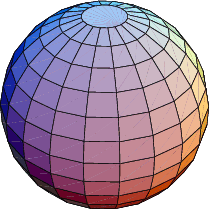 And God said, Let there be a firmament in the midst of the waters, and let it divide the waters from the waters. And God made the firmament, and divided the waters which were under the firmament from the waters which were above the firmament: and it was so.
And God said, Let there be a firmament in the midst of the waters, and let it divide the waters from the waters. And God made the firmament, and divided the waters which were under the firmament from the waters which were above the firmament: and it was so.
And God called the firmament Heaven.
H7549
רקיע
râqı̂ya‛
BDB Definition:
1) extended surface (solid), expanse, firmament
Part of Speech: noun masculine
A Related Word by BDB/Strong’s Number: from H7554
H7554
רקע
râqa‛
BDB Definition:
1) to beat, stamp, beat out, spread out, stretch
Part of Speech: verb
A Related Word by BDB/Strong’s Number: a primitive root
And God said, Let there be lights in the firmament of heaven to divide the day from the night; and let them be for signs, and for seasons, and for days and years: and let them be for lights in the firmament of heaven to give light upon the earth: and it was so. And God made the two great lights; the greater light to rule the day, and the lesser light to rule the night: he made the stars also. And God set them in the firmament of heaven to give light upon the earth, and to rule over the day and over the night, and to divide the light from the darkness: and God saw that it was good. (Genesis 1:14-18 ASV)
Continue reading


 I contend that what the Bible teaches concerning the heavens, earth, sun, moon and stars and what we experience in our daily (and nightly) lives are at odds with what the world of modern science would have us believe.
I contend that what the Bible teaches concerning the heavens, earth, sun, moon and stars and what we experience in our daily (and nightly) lives are at odds with what the world of modern science would have us believe. And the LORD spake unto Moses, saying, Sanctify unto me all the firstborn, whatsoever openeth the womb among the children of Israel, both of man and of beast: it is mine.
And the LORD spake unto Moses, saying, Sanctify unto me all the firstborn, whatsoever openeth the womb among the children of Israel, both of man and of beast: it is mine.



